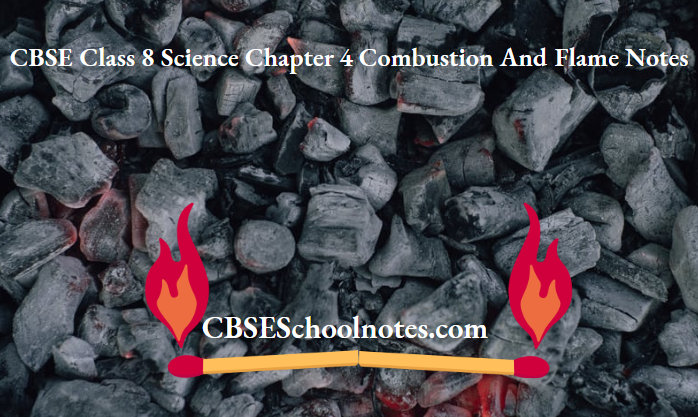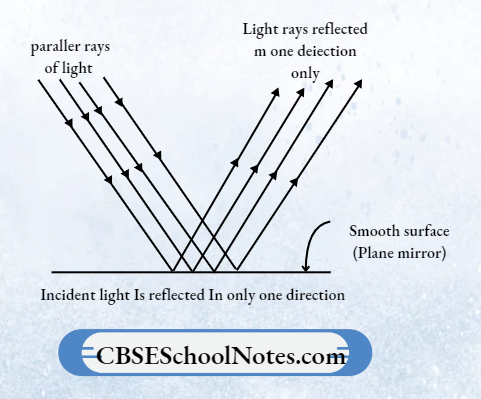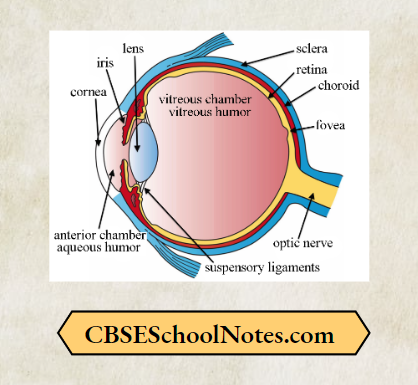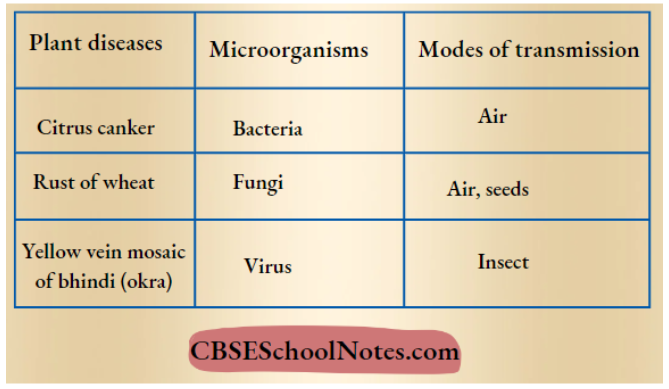CBSE Class 8 Science Chapter 1 Crop Management Revision Notes Crop Management Crops
When plants of the same type are grown and cultivated in a field on a large scale, it is called a crop (fasal in Hindi). Examples include wheat, paddy, and other crops.
India is a vast country, where the climatic conditions like temperature, humidity, and rainfall vary from one region to another. Accordingly, a rich variety of crops is grown in different parts of the country.
Read And Learn More CBSE Class 8 Science Notes
Despite this diversity, two broad cropping patterns can be identified particular season in which they grow.
These are as follows
1. Kharif Crops
The crops which are sown in the rainy season are called Kharif crops or summer crops, for example, paddy (rice), maize, soyabean, cotton, groundnut, millets (bajra), etc. These crops are generally grown from June to September.
” Cbse Class 8 Science Chapter 1 Notes “
2. Rabi Crops
The crops that are grown in winter season are called Rabi crops or winter crops, for example, wheat, gram, pea, mustard, and linseed.
These crops are generally grown from October to March.
Note: Paddy or rice crops are grown in the rainy season because they require a lot of water. It cannot be grown in the winter season.
Class 8 Science Chapter 1 Crop Management Agricultural Practices
Cultivation of crops involves several activities undertaken by farmers over time. activities or tasks are referred to as agricultural practices.
The various agricultural practices of crop production involve
- Preparation of soil
- Sowing
- Adding manure and fertilisers
- Irrigation
- Protecting from weeds
- Harvesting
- Storage
” Crop Management Notes For Class 8 “

Class 8 Science Chapter 1 Crop Management Notes For self-study Preparation Of Soil
The first step for crop production is soil preparation. Soil is the uppermost layer of the Earth where plants are grown.
Only a few centimeters of the top layer of soil support plant growth. It provides water, air, minerals, humus, etc. to the plants. Soil is prepared for sowing seeds by three major methods, which are as follows
” Cbse Class 8 Science Crop Production Notes “
1. Ploughing
The process of loosening and turning the soil is called ploughing or tilling. It is done by using a plough. The loosening and turning of soil by ploughing is helpful because of the following Reasons
Plant ixsois can pencil ale lively mul ileepci Inin the soil and plants are belli lb inly to the ground.
Loose soil helps the plant roots to breathe easily. Ploughing of soil brings the nutrient-rich soil to the top so that the plant can use these nutrients.
Loosened soil helps in the growth of earthworms and microbes present in the soil. These organisms are friends of the farmers since they further turn and loosen the soil and add humus to it.
2. Levelling
Levelling of soil is done with the help of a leveller. The ploughed field may have big pieces of soil called crumbs. Levelling helps to break these crumbs with a plank and prevents loss of moisture from the loose soil. It also helps in the uniform distribution of water in the fields during irrigation.
3. Manuring
Continuous growing of crops makes the soil deprived in certain nutrients. Therefore, farmers have to add manure to the fields to replenish the soil with nutrients. This process is called manuring. Sometimes, manure is added to the soil before tilling. This helps in the proper mixing of manure with soil.
” Agricultural Practices Class 8 Notes “

Agricultural Implements
The above-mentioned practices are done by using various tools. These tools are called agricultural implements. These are discussed below.
Plough It is the most ancient tool used for tilling the soil, adding manure and fertilisers, removing weeds, and turning the soil. This is made up of wood and is drawn by a pair of bulls and other animals (horses, camels, etc). It comprises of strong triangular iron strip called a ploughshare

The Main part of the plough is a long log of Wood Wich is called plough shaft it has a handle at one end and the other end is attached to a beam which is placed on buld necks one pair of bulls which is placed on bull necks one pair of bulls and a man can easy operate the plough Now a day the indigenous wooden plough is inceresigly being replaced by iron plough.
It is used for removing weeds and for loosening the soil. It is simple in structure, a long rod of wood or Iron. A strong, broad, and iron. The iron plate is fixed; all of its codes will work like a blade. It is pulled by the animals.
” Kharif And Rabi Crops Class 8 “

Cultivator nowadays, ploughing is done by a tractor-driven cultivator. It is a modern form of plough which can dig into a considerable area of soil at the same time loosen it and turn it. A cultivator saves both labour and time.
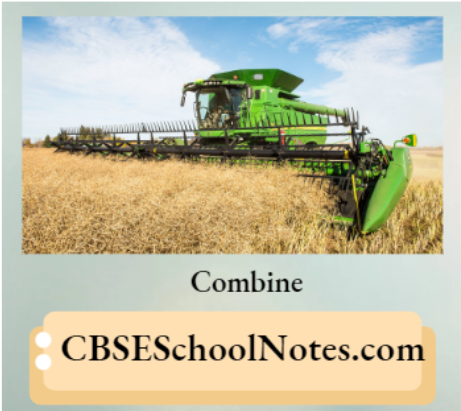
” Soil Preparation For Crop Management “
1-4 Sowing
It is the process of scattering or planting seeds into the soil to grow a new crop plant. Showing is the most important part of crop production before sowing, claiming healthy and good quality of seeds are selected to produce healthy plants and high yields of crops.
Methods of Sowing
Sowing is done either manually or by using machines, as described below.
Traditional Tools
Traditional tools are used with the help of bulls. It was used by farmers earlier in their fields for sowing seeds. Its upper funnel-shaped part is filled with seeds. The seeds pass down through two or three pipes having sharp ends. These ends pierce into the soil and place seeds in that space

” Irrigation Methods In Agriculture Class 8 “
2. Seed Drill
It is a mechanical method of sowing by using a tractor. The seeds are sown uniformly at equal distance and depth. The soil is covered with soil after sowing.

This method protects the seeds from the damage caused by birds. It also saves time and labour. The advantage of sowing seeds at an appropriate distance and depth is that it prevents overcrowding of plants and each plant gets sufficient sunlight, nutrients, and water from the soil.
The National Seed Corporation (NSC) in India plays a key role in producing high-quality agricultural seeds and has contributed to the establishment of seed¬ testing laboratories across various regions in the country.
” Manure Vs Fertilisers Class 8 “
Adding Manure And Fertilisers
Manure and fertilisers are substances that are rich in nutrients and are added to the soil for the healthy growth of plants.
The addition of manure or fertiliser to the soil is called manuring. Farmers add manure to the fields to replenish the soil with nutrients. Improper or insufficient manuring makes plants weak. For replenishing soil with nutrients following methods are used.
Manures
These are organic (natural) substances derived from the decomposition of plant and animal wastes, like cow dung, etc. Plant and animal wastes are dumped in pits in open places and allowed to decompose by some microorganisms. The decomposed matter is used as organic manure.
” Types Of Crops For Cbse Class 8 “
Fertilisers
These are the chemicals that contain the necessary plant nutrients like nitrogen, phosphorus, etc. Examples- Urea, ammonium sulphate, super phosphate, potash, NPK (Nitrogen, Phosphorus, Potassium).
Fertilisers are used to increase soil fertility, which helps farmers to get better yields of crops such as wheat, paddy, and maize. The excessive use of fertilizer is harmful because it makes the soil less fertile and also causes water pollution.
Advantages of Manure Over Fertilisers
The organic manure is considered better than fertilisers for the following reasons
- It enhances the water-holding capacity of the soil.
- It makes the soil porous, due to which the exchange of gases becomes easy.
- It increases the number of friendly microbes.
- It improves the texture of the soil.
” Seed Drill And Sowing Methods Class 8 “

Crop Rotation
The practice in which different types of crops, especially leguminous and non-leguminous crops, are grown alternately in the same field is called crop rotation.
This procedure is followed to improve the fertility of the soil. For example, crops like cereals, vegetables, etc., deplete the soil of the soil. Therefore, leguminous crops are grown alternatively after these crops to maintain the nitrogen level of the soil
The leguminous plants possess nitrogen-fixing bacteria called Rhizobium in their roots, which can directly fix atmospheric nitrogen into soluble nitrogenous compounds. Rotation of crops also saves a lot of nitrogenous or chemical fertilisers.
” Sprinkler And Drip Irrigation Systems “
CBSE Class 8 Science Chapter 1 Crop Management Revision Notes Irrigation
The process of supplying water to crop plants at regular intervals is called irrigation. Water Is Important for the proper growth and development of all living organisms, including plants. A plant contains nearly 90% of water.
Importance of Water to Crop Plant
- Water is absorbed by the plant roots. Along with water, minerals and fertilisers are also absorbed.
- Water is essential because germination of the seed does not take place under dry conditions.
- It also protects the crop from both frost and hot air currents.
- For healthy crop growth, fields have to be watered regularly to maintain the moisture of the soil
Frequency and Timing of Irrigation
The frequency and timing of irrigation differ from crop to crop, soil to soil, and season to season. For example, in summer, the frequency of irrigation is required at a higher rate than in rainy or winter seasons. This is because the rate of evaporation of water from soil and leaves is high in the summer season.
” Weeding Methods In Agriculture “
Sources of Irrigation
Water supplied for irrigation can be taken from different sources, Example rain, wells, tubewells, ponds, lakes, rivers, dams, and canals
Traditional Methods of Irrigation
The water from different sources, such as wells, lakes, and canals, is lifted by different methods to take it to the fields. Cattle or human labour is used in these methods
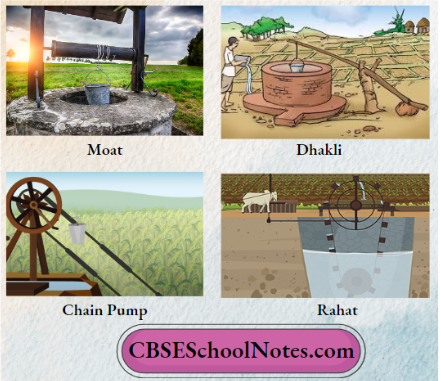
The various traditional ways of irrigation are moat (pulley system), dhckli, chain pump, and rahat (lever system). Pumps are commonly used for lifting water. They use diesel, biogas, electricity, and solar energy
Modern Methods of Irrigation
Traditional methods use manpower and animal power, and there is a wastage of water that also occurs during irrigation. To overcome these problems, modern methods of irrigation are used. The main methods used are as follows
” Threshing And Winnowing Process “
1. Sprinkler System
In this system, there is a main pipeline laid in the field joined with perpendicular pipes, having rotating nozzles on the top.
When water is allowed to flow through the main pipe under pressure with the help of a pump, it escapes from rotating nozzles and is sprinkled like rain over the crops. Sprinklers are very useful for lawns, coffee plantations, and several other crops. This system of irrigation is useful on uneven land where sufficient water is not available.

2. Drip System
In this system, water flows through the narrow pipes and falls drop by drop just near the roots of plants.
In this method, there is no wastage of water as water falls drop by drop, therefore, this system of irrigation is very useful in regions where the availability of water is poor. It is the best technique for watering fruit plants, gardens, and trees.
” Leguminous Plants And Nitrogen Fixation “
Protection From Weeds
The unwanted, wild plants that grow along with the cultivated crops are called weeds.
- The process of removing weeds is called weeding. It is necessary to remove weeds from time to time because
- These unwanted plants are harmful because they compete with the crop plant for nutrients, fertiliser, space, light, and water. Thus, they reduce crop yield.
- Some weeds interfere with even in harvesting and may be poisonous for animals and humans.
Weeding Methods
Farmers adopt many ways to remove weeds and control their growth. Tilling before sowing crops helps in uprooting and killing weeds, which may then dry up and get mixed with the soil. The best time for the removal of weeds is before they produce flowers and seeds. Weeding can be done either manually or by spraying weedicides as discussed below
Manual Weeding
In this method, the weeds are removed from the crop field by pulling them up by hand and throwing them away. Another method of manual weeding is done by using a khurpi. A seed drill is also used to uproot weeds.
” Traditional And Modern Irrigation Techniques “
Spraying Weedicides
Certain chemicals called weedicides (herbicides) like 2,4-D are sprayed in the fields to kill the weeds. The crops remain unaffected by weedicides.
It should be sprayed during the vegetative growth of weeds before flowering and seed formation, otherwise, weeds become difficult to control. Precautionary measures such as covering the nose and mouth with cloth should be taken while spraying weedicides, as they pose health hazards.
Harvesting
The process of cutting and gathering mature (ripened) crop is called harvesting. When crops get mature, they usually turn yellow, golden, or brown. In harvesting, crops are pulled out or cut close to the ground. 1 Harvesting in our country is either done manually by a sickle or by a machine called a harvester.
To obtain seed grains from harvested crops, the following two methods are used

” What Are Kharif And Rabi Crops With Examples? “
Threshing
The process by which the grain seeds are separated from the chaff is called threshing. This is carried out with the help of a machine called a combine, which is a combination ofa harvester and a thresher.

Winnowing
After threshing, the grains are separated from chaff by a process called winnowing. In this process, the mixture of grain, hay, and chaff is dropped from a height into blowing wind.
The heavier seed falls straight to the ground, whereas the chaff and hay are much lighter and are carried away by the wind. The grains form a separate heap and can be collected and packed in gunny bags.

” What Are The Advantages Of Crop Rotation? “
Harvest Festivals
After three or four months of hard work, there comes the day ofthe harvest. The sight of golden fields of standing crop, laden with grain, fills the hearts of farmers with joy and a sense of well-being.
The period is one of great joy and happiness. It is celebrated with great zeal. Special festivals associated with the harvest season are Pongal, Baisakhi, Holi, Diwali, Nabanya, and Bihu.
Storage
The harvested and cleaned grains are dried to evaporate moisture from them before storage. Since the crops/grains have to be kept for a longer time, they should be safe from moisture, insects, rats, and microorganisms. Also, insecticides, rodenticides are sprayed to protect them from rats and insects.

The grains are stored in jute bags or metallic bins by tanners. At large scale, grains are stored in silos and granaries to protect them from pests. Dried neem leaves are used for storing food grains at home, as neem is a natural insecticide
Class 8 Science Chapter 1 Crop Management Short Notes For Quick Revision Food From Animals
Besides plants, some animals also provide us with different kinds of food. The food obtained by animals is rich in protein.
The food derived from animals and the sources are tabulated below

Animal Husbandry
The process of rearing animals, by providing them proper food, shelter, and care, is called animal husbandry. Fish are an important source of animal food in coastal areas. We get cod liver oil from fish, which is rich in vitamin D
Animal husbandry Agricultural practice of breeding and raising livestock.
Agriculture practices: Tasks carried out by farmers for the cultivation of crops.
- Crop Plants of the same kind, cultivated in a field on a large scale.
- Fertilisers are Chemical substances used to increase the fertility of soil.
- Granaries are Places where a large amount of grain can be stored.
- Harvesting Process of cutting and collecting the mature crop.
” What Is The Process Of Threshing And Winnowing? “
Irrigation: Water supply to crops at regular intervals.
- Kharif Crops grown in the rainy season
Manure: Organic substances derived from the decomposition of plant and animal wastes.
- A plough Agricultural implement used for tilling or plowing. ploughing the soil.
- Rabi Crops are grown in the winter season.
Sowing: Planting the seeds in the soil.
- Seeds fertilised and matured ovules.
- Storage Process of protecting the grains, by keeping them in closed containers.
- Silo Tall and cylindrical structures used for storage of grains.
- Threshing Method of separating seed grains from the chaff.
- Winnowing Method of separating seed grains from the chaff by blowing air.
- Weeds are Undesirable plants that grow along with crops. Weedicide Chemicals used to kill weeds











































